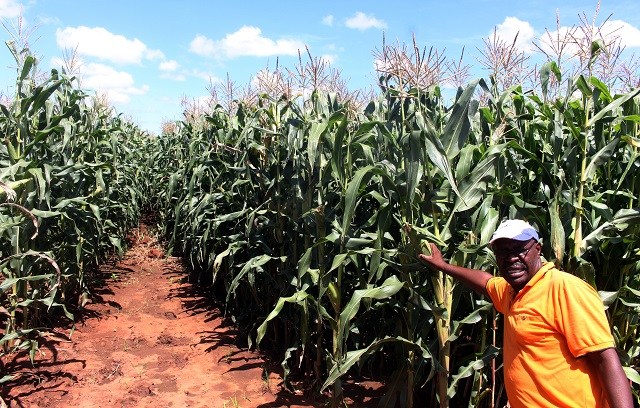By Nelson Banya
CLAIM: Zimbabwe’s maize yield is lower than its regional peers
Source: Agricultural economist expert Wandile Sihlobo
VERDICT: True. Zimbabwe’s maize yield lags behind its neighbours such as South Africa and Zambia and is also below the regional average.
Zimbabwe produced 2,7 million tonnes of its staple grain, maize, in the 2020/21 cropping season, according to official statistics. Taking into account the country’s annual maize demand of 2,25 million (1,8 million tonnes for human consumption and 450,000 tonnes for livestock), Zimbabwe will have a surplus for the year.
However, experts, including South African agricultural economist Wandile Sihlobo, say Zimbabwe still lags its regional peers in terms of productivity despite the good 2020/21 harvest.
“As encouraging this news is – from a Zimbabwean perspective – a closer look into the data reveals essential insights. For example, Zimbabwe is poised to attain 2,7 million tonnes of maize harvest in a record area planting of 1,9 million hectares. This means that the yields are still meagre, estimated at 1,4 tonnes per hectare,” Sihlobo wrote in June.
Maize yield
Output figures, such as Zimbabwe’s 2,7 million tonnes of maize from the last season, do not tell the full story. Yield, which in the case of maize refers to the amount of the grain, in tonnes, produced in a specific area – normally hectare – gives a more useful picture of how efficient the production is.
Yields vary depending on factors such as seed type, weather conditions, fertilizer use and field management practices.
What does the data say?
According to the Zimbabwe government’s own data, the average national maize yield for the 2020/21 season was 1,39 tonnes per hectare. The agriculture ministry has said this 2020/21 yield is the highest recorded in the country since 2000/1.
In comparison, Zambia’s 2020/21 maize yield was 2,8 tonnes per hectare. Zambia produced its biggest crop ever – 3,6 million tonnes, during the 2020/21 season. Malawi’s average yield is around 1,7 tonnes per hectare.
South Africa’s 2020/21 maize yield is 5,8 tonnes per hectare, with total output for the most recent season being 16.2 million tonnes.
While South Africa’s high yields are often attributed to the use of genetically engineered (GE) seeds and high levels of mechanisation, both Zambia and Malawi still maintain a ban on GE seeds.
Data shows that Zimbabwe has historically lagged behind its regional peers in terms of yield, a factor which predates its land redistribution programme, which started in 2000 and precipitated a decline in farm output, from which the country is starting to recover.
Factors
Experts say several factors, including the use of fertilizer, influence yields.
Data shows that Zimbabwe’s fertilizer use has consistently lagged behind comparable peers such as Zambia and Malawi since the early 2000s, when those two countries introduced input subsidies for smallholder farmers.
A 1991 paper jointly produced by the Zimbabwe government’s Agricultural Technical and Extension Services (Agritex) and the International Maize and Wheat Improvement Centre (CIMMYT) estimated that as much as “310,000 tonnes of maize grain was foregone each year because of late planting.” This was an equivalent of 15% of the total output around 1990.
CONCLUSION
Sihlobo’s assertion that Zimbabwe’s maize yields are “meagre” are true, when compared to the country’s regional peers.
Do you want to use our content? Click Here












